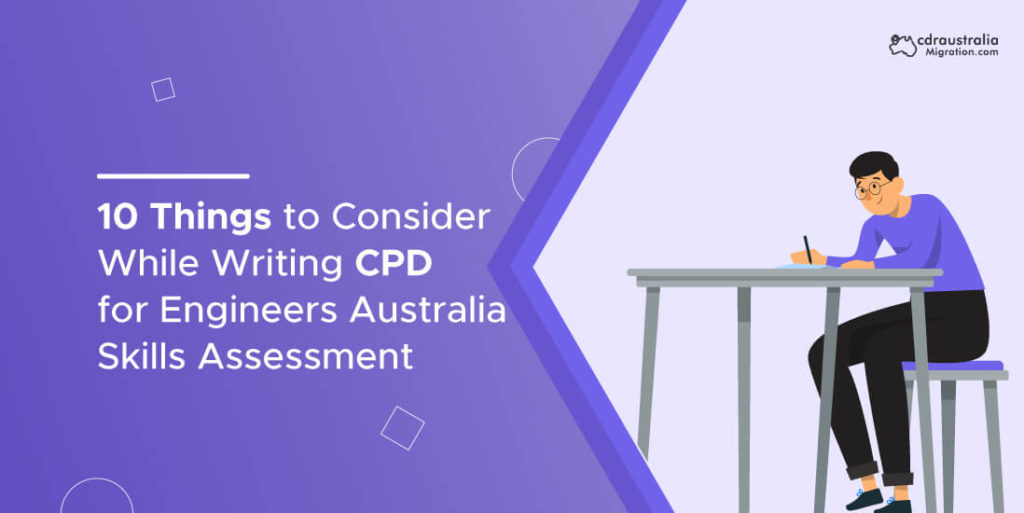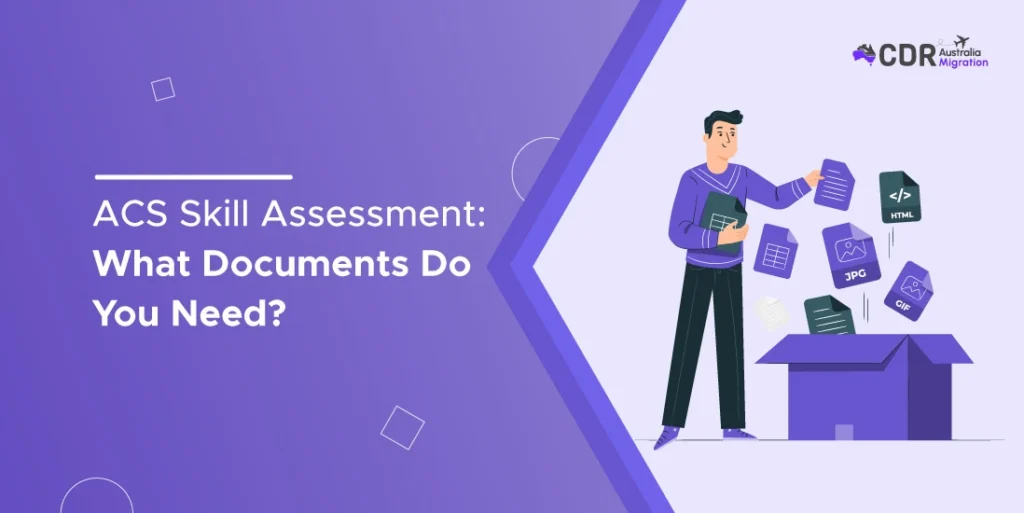The MSA booklet in a Competency Demonstration Report (CDR) for Engineers Australia is a comprehensive guide detailing the application process, documentation requirements, and assessment criteria for engineers seeking to migrate to Australia. It includes instructions on preparing the CDR, writing Career Episodes, and adhering to professional standards, ensuring applicants align their submissions with Engineers Australia’s expectations.
This guide provides essential information for engineers planning to migrate to Australia and undergo the Engineers Australia Migration Skill Assessment. It covers everything from understanding the assessment process to preparing a Competency Demonstration Report (CDR) effectively.
You’ll learn about Stage 1 Competency, key components of a successful CDR, and tips for a successful skill assessment. Whether you’re gathering required documentation or structuring your CDR, this guide offers valuable insights to help you navigate the assessment process with confidence.
1. Introduction to Migration Skill Assessment
1.1 Overview of Engineers Australia Migration Skill Assessment
The Engineers Australia Migration Skill Assessment is a comprehensive evaluation process for engineers wishing to migrate to Australia.
It involves assessing an engineer’s educational qualifications, professional experience, and overall competencies to ensure they align with Australian engineering standards. This assessment is a prerequisite for obtaining a skilled migration visa, which allows engineers to live and work in Australia.
1.2 Importance of Skill Assessment for Engineers
The skill assessment is crucial for engineers as it verifies their qualifications and professional skills, ensuring they meet the stringent standards set by Engineers Australia. This process not only facilitates skilled migration but also enhances an engineer’s credibility and recognition in the Australian job market.
By successfully passing the skill assessment, engineers demonstrate their readiness for professional practice in Australia, thereby increasing their prospects for employment and career advancement in the engineering field.
2. Understanding Stage 1 Competency
2.1 What is Stage 1 Competency?
Definition and Overview
Stage 1 Competency represents the baseline level of knowledge and skills required for an engineer to practice independently. It encompasses three main areas: technical proficiency, professional and personal attributes, and the ability to apply engineering principles to real-world problems.
This stage ensures that engineers possess the foundational expertise and ethical understanding necessary to perform effectively and responsibly in their field.
Key Objectives of Stage 1 Competency
The key objectives of Stage 1 Competency are to ensure that engineers have a solid foundation in technical knowledge, demonstrate professional and ethical conduct, and possess the ability to apply engineering principles effectively to solve practical problems. This stage aims to confirm that engineers are equipped with the necessary skills and attributes to practice independently and contribute meaningfully to the engineering profession.
2.2 Importance of Stage 1 Competency
Role in Professional Development
Explores how Stage 1 Competency contributes to the ongoing growth and advancement of engineers as they progress in their careers.
Significance for Engineers Australia Assessment
Discusses the specific relevance of Stage 1 Competency within the framework of Engineers Australia’s assessment processes and requirements.
2.3 Components of Stage 1 Competency
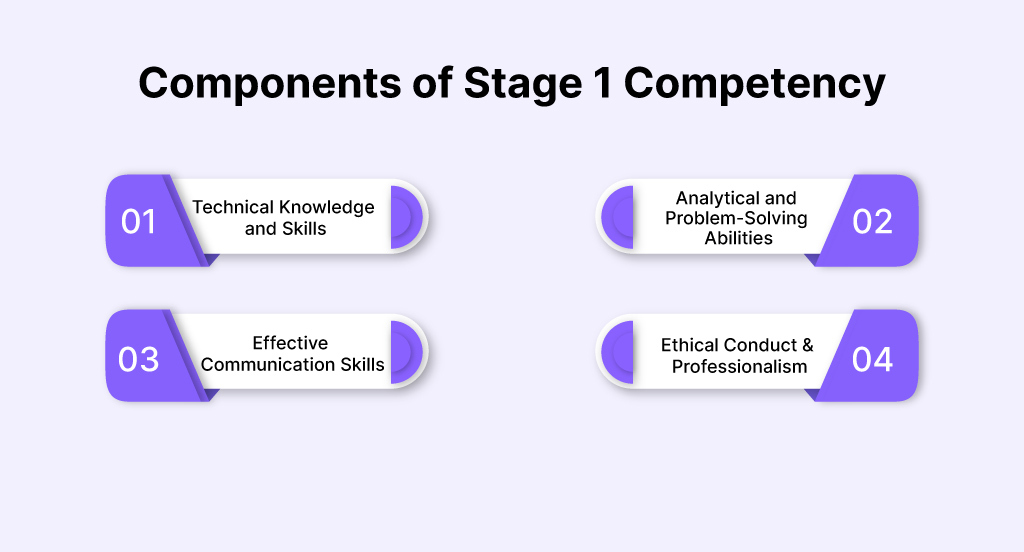
Technical Knowledge and Skills
Describes the foundational technical competencies and proficiencies expected from engineers, including their ability to apply engineering principles effectively.
Analytical and Problem-Solving Abilities
Examines the importance of analytical thinking and problem-solving skills in addressing complex engineering challenges and scenarios.
Effective Communication Skills
Highlights the essential role of communication skills in facilitating collaboration, conveying technical information, and ensuring effective project management.
Ethical Conduct and Professionalism
Discusses the ethical responsibilities and professional conduct expected from engineers, emphasizing integrity, accountability, and adherence to professional standards.
2.4 Demonstrating Stage 1 Competency
Preparing Career Episodes
Engineers must carefully craft career episodes that effectively showcase their skills and experiences relevant to Stage 1 Competency. This involves selecting appropriate projects and experiences and organizing them in a structured and compelling narrative.
Selecting Relevant Projects and Experiences
Engineers should choose projects that demonstrate their technical expertise, problem-solving abilities, and contributions to the engineering field. Selecting projects aligned with competency standards ensures that assessors can accurately evaluate the engineer’s readiness for professional practice.
Describing Responsibilities and Achievements
In each career episode, engineers should provide detailed descriptions of their roles, responsibilities, and achievements. This includes highlighting specific tasks undertaken, challenges faced, and outcomes achieved, emphasizing the engineer’s direct involvement and contributions to the project’s success.
2.5 Technical Knowledge and Skills
Core Engineering Principles
Engineers must demonstrate a solid understanding of core engineering principles relevant to their discipline. This includes knowledge of fundamental concepts such as mechanics, thermodynamics, and materials science, as well as their practical application in engineering projects.
Practical Application of Engineering Concepts
Assessors look for evidence of engineers applying theoretical knowledge to practical situations. Engineers should describe how they have used engineering principles to analyze problems, develop solutions, and optimize designs in real-world projects.
Familiarity with Engineering Tools and Technologies
Engineers need to showcase proficiency in using relevant engineering tools, software, and technologies. This includes CAD software, simulation tools, and specialized equipment, demonstrating their ability to leverage technology to enhance their engineering work.
2.6 Analytical and Problem-Solving Abilities
Identifying and Analyzing Engineering Problems
Engineers should demonstrate their ability to identify and analyze complex engineering problems. This involves conducting thorough assessments, considering relevant factors and constraints, and formulating effective problem-solving strategies.
Developing Innovative Solutions
Engineers are expected to develop innovative and practical solutions to engineering challenges. This may involve thinking creatively, exploring alternative approaches, and adapting existing methodologies to suit specific project requirements.
Decision-Making Based on Best Practices
Engineers must make informed decisions based on engineering best practices and standards. This includes considering technical feasibility, cost-effectiveness, and risk management principles when evaluating potential solutions and making recommendations.
2.7 Effective Communication Skills
Writing Clear and Concise Reports
Emphasizes the importance of crafting reports that are easily understood and succinct, showcasing the ability to communicate technical information effectively.
Presenting Technical Information
Discusses the skill of delivering presentations that effectively convey complex engineering concepts to diverse audiences.
Collaborating with Multidisciplinary Teams
Highlights the ability to work collaboratively with professionals from various backgrounds, demonstrating effective communication and teamwork.
2.8 Ethical Conduct and Professionalism
Adherence to Engineering Codes of Ethics
Emphasizes the importance of upholding ethical standards set forth by engineering bodies, ensuring integrity and accountability in professional practice.
Commitment to Safety and Sustainability
Discusses the responsibility of engineers to prioritize safety measures and sustainable practices in their work, promoting social and environmental responsibility.
Maintaining Professional Integrity
Focuses on the necessity of maintaining honesty, transparency, and professionalism in all aspects of engineering practice, fostering trust and credibility.
2.9 Assessment of Stage 1 Competency
Criteria Used by Engineers Australia
Describes the specific criteria and standards employed by Engineers Australia to evaluate an engineer’s competency, guiding candidates in meeting assessment requirements.
Evaluation Process and Expectations
Provides insight into the assessment process, including timelines, expectations, and the role of assessors in evaluating competency levels.
Common Pitfalls and How to Avoid Them
Highlights common mistakes or shortcomings in competency assessments and offers strategies for candidates to overcome these challenges and succeed in their evaluations.
2.10 Examples of Demonstrating Stage 1 Competency
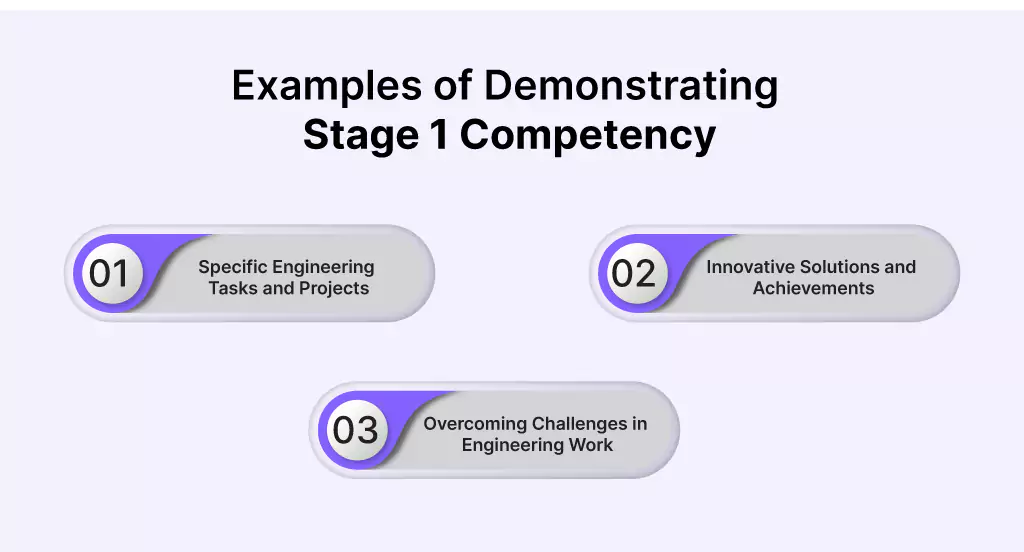
Specific Engineering Tasks and Projects
Illustrates how engineers can showcase their competence through descriptions of specific tasks and projects they have undertaken, emphasizing their contributions and achievements.
Innovative Solutions and Achievements
Showcases examples of innovative solutions developed by engineers to address complex engineering problems, highlighting creativity and problem-solving skills.
Overcoming Challenges in Engineering Work
Discusses instances where engineers encountered challenges during projects and successfully resolved them, demonstrating adaptability, resilience, and effective problem-solving abilities.
3. Preparing for the Competency Demonstration Report (CDR)
3.1 What is a Competency Demonstration Report (CDR)?
This section defines the Competency Demonstration Report (CDR), explaining it as a crucial document required by Engineers Australia for assessing the skills and qualifications of engineering professionals seeking migration or accreditation in Australia.
3.2 Importance of CDR in Engineers Australia Skill Assessment
This part emphasizes the significance of the CDR in the Engineers Australia skill assessment process. It highlights how the CDR serves as a comprehensive showcase of an engineer’s competencies, essential for determining eligibility for migration or professional recognition.
3.3 Key Components of a Successful CDR
Here, applicants learn about the essential components that make up a successful Competency Demonstration Report (CDR). It covers the main sections such as Career Episodes, Summary statements, and Continuous Professional Development (CPD), stressing their importance in presenting qualifications and experiences effectively.
Editor’s Choice: What are the documents required for CDR Report Writing? 🤔🤔✅
3.4 Understanding the CDR Requirements
3.4.1 Overview of CDR Guidelines by Engineers Australia
Engineers Australia provides detailed guidelines for preparing a Competency Demonstration Report (CDR), which serves as a crucial part of the migration or accreditation process for engineers.
These guidelines outline the structure, format, and content requirements for the CDR submission. They typically include instructions on the number of Career Episodes required, the format of the Summary Statement, and the documentation needed for Continuous Professional Development (CPD).
3.4.2 Specific Requirements for Each CDR Section
Engineers Australia specifies detailed requirements for each section of the Competency Demonstration Report (CDR). This includes the Career Episodes, where engineers must provide detailed accounts of their engineering experiences, projects, and responsibilities. Each Career Episode must demonstrate the applicant’s competency in specific engineering skills and knowledge areas.
The Summary Statement is another critical section that requires engineers to map their engineering experiences to the competency elements outlined by Engineers Australia.
Additionally, there are requirements for documenting Continuous Professional Development (CPD), showcasing ongoing learning and development activities relevant to the engineering profession. Adhering to these specific requirements is essential for a successful CDR submission and assessment by Engineers Australia.
3.5 Identifying Your Engineering Category
3.5.1 Overview of Engineering Categories Recognized by Engineers Australia
Engineers Australia recognizes various engineering categories that encompass different disciplines and specializations. These categories typically include Civil Engineering, Mechanical Engineering, Electrical Engineering, Chemical Engineering, and many more. Each category represents a distinct field of engineering expertise with its own unique set of skills, knowledge, and qualifications.
3.5.2 Determining the Appropriate Category for Your Skill Assessment:
To determine the appropriate engineering category for your skill assessment, you need to carefully review the descriptions and requirements provided by Engineers Australia for each category. Consider factors such as your academic background, work experience, and professional expertise to align yourself with the most relevant category.
It’s crucial to choose the category that best reflects your qualifications and experience to ensure an accurate assessment of your skills by Engineers Australia. If you’re unsure about which category suits you best, seeking guidance from professional advisors or consultants familiar with Engineers Australia’s assessment process can be beneficial.
Ultimately, selecting the right engineering category is essential for presenting your qualifications effectively and enhancing your chances of a successful skill assessment and migration or accreditation process in Australia.
3.6 Gathering Required Documentation
3.6.1 Documentation Checklist for CDR Submission
Before sending your Competency Demonstration Report (CDR) to Engineers Australia, you need to make sure you have all the necessary documents. These might include your academic certificates, transcripts, resume, and references from past jobs. Engineers Australia provides a checklist of what you need, so it’s essential to go through it carefully and gather all the required documents.
3.6.2 Ensuring Authenticity and Accuracy of Documents
The documents you submit must be genuine and correct. This means your certificates and references should accurately reflect your qualifications and work experience. To make sure everything is right, you might need to get official copies of your documents or translations if they’re in another language. Also, double-check all the information to ensure it’s accurate before sending it to Engineers Australia.
3.7 Structuring Your CDR
3.7.1 Importance of a Well-Structured CDR
A well-structured Competency Demonstration Report (CDR) is vital for effectively presenting an engineer’s qualifications and experiences to Engineers Australia. A clear and organized structure enhances readability, comprehension, and assessment of the document.
It allows assessors to easily locate and review the required information, ensuring that the engineer’s competencies are adequately demonstrated. Moreover, a well-structured CDR reflects the engineer’s professionalism and attention to detail, which can positively influence the assessment outcome.
✅Read More: What is the CDR Writing Process for Engineers Australia? 🔔🔔 👈
3.7.2 Organizing Career Episodes, Summary Statement, and CPD
Career Episodes
Each Career Episode should be organized chronologically, detailing specific engineering projects or experiences undertaken by the engineer. Clear headings, subheadings, and paragraphs should be used to delineate different aspects of each episode, such as project objectives, roles and responsibilities, engineering activities performed, and outcomes achieved. The episodes should be structured in a manner that aligns with the competency elements specified by Engineers Australia.
Summary Statement
The Summary Statement serves as a cross-reference to the Career Episodes, demonstrating how the engineer’s experiences align with the competency elements required by Engineers Australia. It should be structured according to the competency elements, with each element addressed separately. The summary should provide concise evidence and examples from the Career Episodes to substantiate the engineer’s claims of competency.
Continuous Professional Development (CPD)
The CPD section should be organized to showcase the engineer’s ongoing learning and development activities relevant to their engineering discipline. It should include details of courses attended, conferences, seminars, or workshops participated in, technical publications authored or reviewed, and any other relevant professional development activities. The CPD entries should be presented in a clear and organized format, highlighting the engineer’s commitment to continuous learning and improvement.
Overall, by organizing Career Episodes, Summary Statement, and CPD in a well-structured manner, engineers can effectively convey their competencies, experiences, and professional development to Engineers Australia, increasing the likelihood of a successful assessment outcome.
3.8 Writing Clear and Concise Career Episodes
3.8.1 Tips for Describing Engineering Projects and Experiences
When you talk about your engineering projects and experiences, keep it simple and clear. Start by explaining what the project was about, what you did, and why it was important. Use easy-to-understand language to describe your role and what you did in the project.
Talk about any problems you faced and how you solved them. Also, mention any new or creative ideas you came up with. Make sure to show off your skills and knowledge in engineering.
3.8.2 Highlighting Key Achievements and Contributions
In your stories about your work, focus on the important things you did and the results you achieved. Talk about any big successes or milestones you reached. Describe any challenges you faced and how you dealt with them. If you can, give numbers or facts to show how your work made a difference. This will help show how skilled and valuable you are as an engineer.
3.9 Crafting an Effective Summary Statement
3.9.1 Importance of the Summary Statement in CDR Assessment
The Summary Statement holds significant importance in the Competency Demonstration Report (CDR) assessment process conducted by Engineers Australia. It serves as a bridge between the Career Episodes and the competency elements specified in the Australian Engineering Competency Standards (Stage 2).
The Summary Statement allows engineers to demonstrate how their experiences and achievements align with the competency elements, providing assessors with a clear overview of their competency level.
3.9.2 Key Points to Include for Each Competency Element
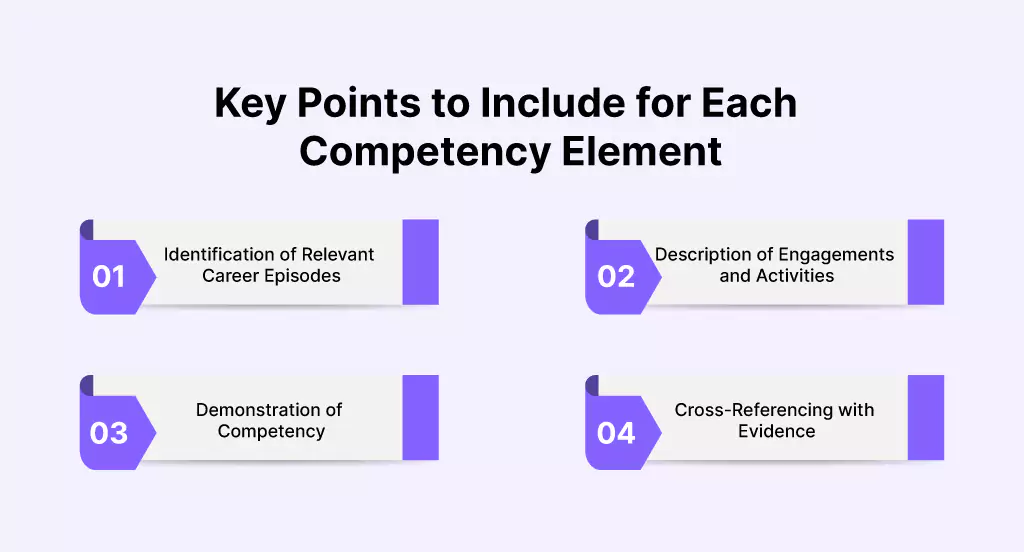
When crafting the Summary Statement, engineers should ensure to address each competency element comprehensively. Key points to include for each competency element are:
- Identification of Relevant Career Episodes: Engineers should identify which Career Episodes correspond to each competency element. They should clearly reference the specific episodes where they demonstrated the skills and knowledge related to the element.
- Description of Engagements and Activities: For each competency element, engineers need to provide a detailed description of the engagements and activities they undertook in the Career Episodes. This description should highlight the specific tasks, responsibilities, and challenges faced during each engagement.
- Demonstration of Competency: Engineers must demonstrate how their experiences in the Career Episodes illustrate their competency in each element. They should provide evidence of how they applied engineering principles, methodologies, and best practices to solve problems and achieve project objectives.
- Cross-Referencing with Evidence: It’s essential to cross-reference the information provided in the Summary Statement with evidence presented in the Career Episodes. Engineers should ensure consistency and coherence between the two sections, reinforcing their claims with tangible examples and achievements.
- Reflection on Learning and Development: Finally, engineers should reflect on their learning and development throughout their Career Episodes, emphasizing how each experience contributed to their professional growth and competency development. This reflection adds depth to the Summary Statement and demonstrates a commitment to continuous improvement.
By incorporating these key points into their Summary Statement, engineers can effectively showcase their competencies and align their experiences with the requirements of Engineers Australia’s skill assessment process.
3.10 Reviewing and Editing Your CDR
3.10.1 Importance of Proofreading and Editing
Proofreading and editing mean carefully checking your Competency Demonstration Report (CDR) for mistakes and making it better before submitting it. This step is super important because it helps you catch any errors in spelling, grammar, or clarity.
Fixing these mistakes makes your CDR look more professional and trustworthy. Even small mistakes can make a big difference, so taking the time to proofread and edit is worth it.
3.10.2 Seeking Feedback from Peers or Professionals
Getting feedback from friends, colleagues, or experts is a smart move when you’re working on your CDR. They can look at your report with fresh eyes and give you helpful advice on how to make it better. They might spot things you didn’t notice, like confusing sentences or missing information. Their feedback can make your CDR stronger and increase your chances of success. Plus, it’s always good to have another opinion before you send off your important document.
4. CDR Sample and Writing Tips
4.1 Accessing CDR Samples
This section guides how to find and access CDR samples. It may include information on where to look for samples, how to use them for reference, and the importance of understanding the structure and content of a well-prepared CDR sample.
4.2 Writing Clear and Concise Career Episodes
Here, applicants learn the importance of writing Career Episodes in a clear and concise manner. It may include tips on how to structure Career Episodes effectively, avoid unnecessary details, and focus on straightforwardly highlighting key achievements and contributions.
4.3 Using Specific Examples and Quantifiable Data
This part emphasizes the significance of using specific examples and quantifiable data to strengthen Career Episodes within the CDR. It may include advice on how to provide concrete evidence of achievements, such as project outcomes, measurable results, and successful outcomes, to demonstrate competencies effectively.
5. Common Mistakes to Avoid in CDR Preparation

5.1 Overly Technical Language
Avoid using too much technical jargon in your CDR. Assessors may not understand it well. Keep your language clear and simple, so they can easily grasp your qualifications and experiences.
5.2 Insufficient Detail in Descriptions
Make sure you provide enough detail about your engineering projects and experiences. Without sufficient information, assessors won’t be able to evaluate your skills properly. Include specific examples and measurable outcomes to strengthen your descriptions.
5.3 Ignoring Competency Standards
Don’t overlook the competency standards set by Engineers Australia. Your CDR needs to align with these standards to be successful. Make sure you address each competency element thoroughly to demonstrate your abilities effectively.
6. Submission Process for Engineers Australia
6.1 Steps to Submit Your CDR
- Create an Online Account: Register and create an account on the Engineers Australia website.
- Prepare Your Documents: Gather all required documents, ensuring they are certified and translated if necessary.
- Fill Out Application Forms: Complete the necessary online forms accurately.
- Upload Documents: Scan and upload all required CDR documents, including the CDR components, academic transcripts, and proof of employment.
- Pay the Application Fee: Make the payment for the assessment fee through the online portal.
- Submit Application: Review all entered information and uploaded documents, then submit the application.
6.2 Required Documentation for Migration Skill Assessment Booklet
1. Competency Demonstration Report (CDR)
– Three Career Episodes
– Summary Statement
– Continuing Professional Development (CPD) Report
2. Personal Documents
– Valid Passport Bio-data Page
– Recent Passport-sized Photograph
3. Academic Documents
– Certified copies of academic degree certificates
– Academic transcripts
4. Employment Documents
– References from employers
– Detailed CV/Resume
5. English Language Proficiency
– IELTS, TOEFL, or PTE Academic test results (if applicable)
6.3 Timeline and Expectations
- Acknowledgment of Receipt: Confirmation of application receipt typically within a few days.
- Pre-assessment Review: Preliminary review to check for completeness of documents, usually within a few weeks.
- Detailed Assessment: Comprehensive evaluation of the CDR and documents, typically taking a few months.
- Outcome Notification: Notification of the assessment outcome, with possible timelines ranging from 4 to 6 months.
- Communication: Regular updates and communication from Engineers Australia through the online portal during the assessment process.
This detailed outline ensures applicants are well-informed and can efficiently navigate the CDR submission process to Engineers Australia.
✅Also, Check Out: Engineer Australia Fast Track Assessment. 🚀🚀👈
7. Tips for a Successful Skill Assessment
7.1 Emphasizing Relevant Skills and Experiences
Focus on showcasing skills and experiences that are directly relevant to your engineering discipline, highlighting how they meet the required competencies.
7.2 Aligning Career Episodes with Competency Standards
Ensure that your Career Episodes closely match the competency standards set by Engineers Australia, providing clear evidence of your capabilities.
7.3 Preparing for Potential Interviews
Be ready for interviews by practicing responses that demonstrate your skills, knowledge, and understanding of industry standards, increasing your chances of success.
Conclusion
In conclusion, undergoing the Engineers Australia Migration Skill Assessment is a crucial step for engineers aspiring to migrate to Australia. By understanding Stage 1 Competency, preparing a well-structured Competency Demonstration Report (CDR), and emphasizing relevant skills and experiences, engineers can increase their chances of success in the assessment process. This assessment not only facilitates skilled migration but also enhances an engineer’s credibility and recognition in the Australian job market.
With thorough preparation and adherence to the assessment requirements, engineers can demonstrate their readiness for professional practice in Australia and pave the way for a successful career in the engineering field. Additionally, the Engineers Australia assessment validity ensures that the qualifications and competencies of engineers are recognized and trusted, providing assurance to both employers and the broader engineering community.
FAQs
Q: What is the Engineers Australia Migration Skill Assessment?
- The Engineers Australia Migration Skill Assessment is a comprehensive evaluation process for engineers seeking to migrate to Australia. It assesses an engineer’s educational qualifications, professional experience, and competencies to ensure they meet Australian engineering standards.
Q: Why is the skill assessment important for engineers?
- The skill assessment verifies an engineer’s qualifications and professional skills, ensuring they meet the standards set by Engineers Australia. It is crucial for skilled migration and enhances an engineer’s credibility and recognition in the Australian job market.
Q: What is Stage 1 Competency, and why is it significant?
- Stage 1 Competency refers to the foundational skills and knowledge required for professional engineering practice. It is essential for engineers to demonstrate Stage 1 Competency to qualify for skilled migration and accreditation in Australia.
Q: What are the key components of a Competency Demonstration Report (CDR)?
- The key components of a CDR include Career Episodes, Summary Statement, and Continuous Professional Development (CPD). These sections collectively showcase an engineer’s qualifications, experiences, and commitment to professional development.
Q: How should Career Episodes be structured?
- Career Episodes should be organized chronologically and include clear descriptions of engineering projects and experiences. Engineers should highlight their roles, responsibilities, achievements, and contributions to demonstrate competency effectively.


